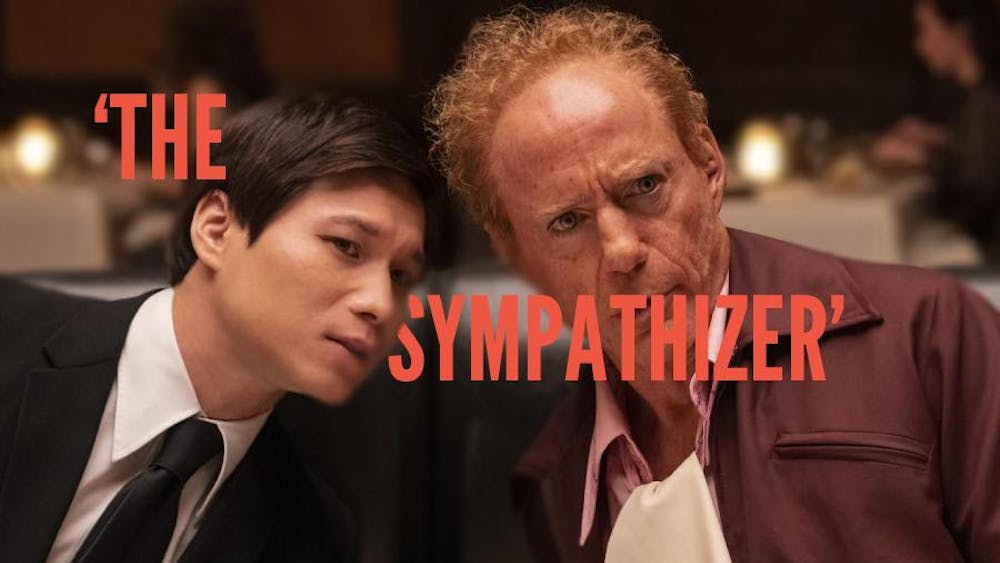This past weekend, the Music Department and the Notre Dame Opera joined forces to put on a production of "Sweeney Todd: The Demon Barber of Fleet Street." Although not an opera, this show is a challenging and thought-provoking piece of musical drama that pushes audiences past traditional comfort zones.
For those who don't know the show, it tells the tale of a barber named Benjamin Barker. After the local judge lusts after his wife and deports him far away for a crime he didn't commit, Barker finally returns to civilization as Sweeney Todd, bent on seeking his revenge. As he waits and conspires ways to kill the judge, he ends up killing multitudes of others, deciding everybody deserves to die because "the lives of the wicked should be made brief; for the rest of us, death will be a relief."
This musical is neither focused on love nor tap dancing. The feelings onstage are dark throughout, angry, and even murderous -- a fact creator Stephen Sondheim addresses with bits of humor and even a bit of a twisted love story. It's hard to put it any other way when Sweeney Todd enters into a somewhat romantic relationship with one ditzy London widow named Mrs. Lovett, who makes and sells "the worst meat pies" in the British capital.
Audiences watch in horror as Mrs. Lovett's meat pies become the best and most popular around, thanks to the abundance of extremely fresh meat Sweeney Todd accumulates in his barber shop. The story is full of suspense and plot twists, and no shortage of spilled blood - hopefully of the fake stage variety. As Sweeney focuses on the ongoing plot to kill the judge when he comes in for a shave, he gets caught up in the dementia first of his progress and then of his postponed success in the only mission that really matters to him. Todd grows even angrier as his proto-serial killer personality starts to come apart at the seams. As they say: you always hurt the ones you love.
The Music Department and Opera made a gutsy choice in this show. It is a difficult piece in terms of subtext and general dark themes, many of which interact and interplay in ways that are hard to grasp. It is never certain how a show like this - far removed from what's normally considered "entertainment" - will be received. However, Notre Dame has done justice to the piece, adhering to Sondheim's conditions and adding its own innovative flares.
For instance, in the song "A Little Priest" - which discusses the types of people they can bake into pies because "everybody shaves" - the company performers come onto the stage dressed as recognizable character types and join the rest of the future pie fillings in a background dance. Although this innovative addition to the style of the show added a comedic break from the darkness and tension, it distracted from the heart of the piece that comes from the playd on words that keep coming line after line.
Filled with such gems as "This might be a little bit stringy, but then, of course, it's fiddle player!" and "We'll serve anyone - and to anyone - at all," this is definitely a time when the strength of the scene lies within the lyrics. Sondheim has been a master of literate, unexpected lyrics show after show since his earliest lyricism penning the words to "West Side Story." In any Sondheim musical, song lyrics are not something you want to lose to attentions focused elsewhere.
Another significant change made by this production was to have Sweeney kill himself at the end -- as opposed to having the young boy Toby kill him. This is likely intended to show how desperate Sweeney Todd is and perhaps has been through the whole show. After seeing how his revenge-seeking behavior and grotesque destruction of his own humanity has killed the person he cared about most and for whom he went through this ordeal, he despises himself and meets his end the same way his victims did - slitting his own throat. This was a powerful moment in the show, with the audience left both to watch as Sweeney's madness literally kills him and to contemplate their own vendettas and how they could be affecting both themselves and those around them.
Anthony (Mike Clark) really stood out as a powerhouse. Clark's voice was clear and strong, and fit well with Anthony's character. The actors playing Sweeney Todd (alternately Zach Angus and Sean McGee), however, have the biggest challenge. Not only is the character the most complex and demented in the show, but also, with predecessors like Len Cariou in the original Broadway cast and Johnny Depp in the movie version, they have a lot to live up to. Taking into account that Angus (Sweeney in the performance I attended) is not an actor with 30-plus years of experience, he fit the shoes of his predecessors well, and did justice to the role.
The orchestra for the show did a fantastic job handling Sondheim's chilling and breathtakingly beautiful music; the composer is famous for writing rather difficult pieces for musicians to play. The real power of this show comes from the music: the swift changes in mood, the suspenseful dissonant chords, the rising crescendos and the eerie combinations of notes. In this sense, thanks to the orchestra, the intent of "Sweeney Todd" as off-kilter musical drama was heard loud and clear.
Overall, I hope Notre Dame continues to make gutsy choices such as this: shows that are thought-provoking and deep are great for students to broaden their minds and consider possibilities previously not considered. Open minds and greater cultural literacy should be goals for every Notre Dame student, and this weekend, the Music Department and Opera brought them one step closer.
Contact Tessa Demers at tdemers@nd.edu













